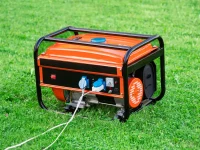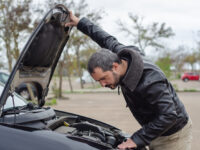The Role of Insurance in Hail Damage Repair: Navigating Claims and Coverage
Hailstorms can cause significant damage to vehicles, leaving owners with the burden of repairs. Understanding the role of insurance in hail damage repair is crucial for vehicle owners. This guide will help you navigate the complexities of insurance claims and coverage, ensuring you are well-prepared to handle the aftermath of a hailstorm.
Understanding Your Coverage
Before a hailstorm strikes, it’s important to understand your insurance coverage. Most auto insurance policies include comprehensive coverage, which typically covers hail damage. Review your policy to ensure you have comprehensive coverage and understand the specifics, such as deductibles and limits.
- Comprehensive Coverage: This type of coverage pays for damage to your vehicle caused by non-collision events, including hail, theft, and vandalism. It’s optional but highly recommended, especially in hail-prone areas.
- Deductibles: The deductible is the amount you pay out of pocket before your insurance kicks in. Ensure you know your deductible amount and factor it into your repair costs.
- Policy Limits: Check if your policy has any limits on the amount covered for hail damage. Some policies may have specific caps for certain types of damage.
Filing a Hail Damage Claim
When your vehicle sustains hail damage, filing a claim promptly is essential. Follow these steps to ensure a smooth claims process:
- Document the Damage: Take clear, detailed photos of the hail damage from multiple angles. This visual evidence is crucial for your insurance claim.
- Contact Your Insurance Company: Report the damage to your insurance provider as soon as possible. Provide them with all necessary information, including the date and time of the hailstorm and the extent of the damage.
- Submit a Claim: Your insurance company will guide you through the claims process. Be prepared to fill out forms and provide additional documentation, such as the photos you took.
- Schedule an Inspection: An insurance adjuster will inspect your vehicle to assess the damage. Be present during the inspection to answer any questions and provide additional information if needed.
- Get Repair Estimates: Obtain estimates from reputable repair shops. Some insurance companies may have preferred repair shops, but you have the right to choose your repair facility.
Working with Repair Shops
Choosing the right repair shop is crucial for ensuring quality repairs. Look for shops specializing in hail damage and Paintless Dent Repair (PDR). PDR is an effective method for repairing hail damage without affecting your vehicle’s original paint.
- Reputation and Experience: Select a repair shop with a strong reputation and extensive experience in hail damage repair.
- Certifications and Training: Ensure the technicians are certified and trained in the latest repair techniques.
- Warranty: A reputable shop should offer a warranty on their repairs, giving you peace of mind.
Dealing with Insurance Adjusters
Insurance adjusters play a key role in the claims process. They assess the damage and determine the amount your insurance company will pay for repairs. Here are some tips for working with adjusters:
- Be Honest and Detailed: Provide accurate and detailed information about the damage. Honesty is crucial to ensure a fair assessment.
- Ask Questions: If you don’t understand something, ask. Understanding the adjuster’s assessment and the rationale behind it is important.
- Get a Second Opinion: If you disagree with the adjuster’s assessment, you can request a second opinion or hire an independent adjuster.
Common Challenges and How to Overcome Them
Navigating insurance claims for hail damage can present challenges. Here are some common issues and how to address them:
- Disputes Over Damage Assessment: If you believe the adjuster’s assessment is incorrect, provide additional evidence, such as photos or a second opinion from another repair shop.
- Delays in Processing: Follow up regularly with your insurance company to ensure your claim is being processed in a timely manner.
- Out-of-Pocket Costs: Understand your deductible and be prepared to cover it. If repair costs exceed your policy limits, you may need to cover the additional expenses.
Conclusion
Navigating insurance claims for hail damage can be complex, but understanding your coverage and following the right steps can make the process smoother. By documenting the damage, working with reputable repair shops, and effectively communicating with insurance adjusters, you can ensure your vehicle is restored to its pre-damage condition with minimal stress. Stay informed and proactive to protect your vehicle and your investment.







